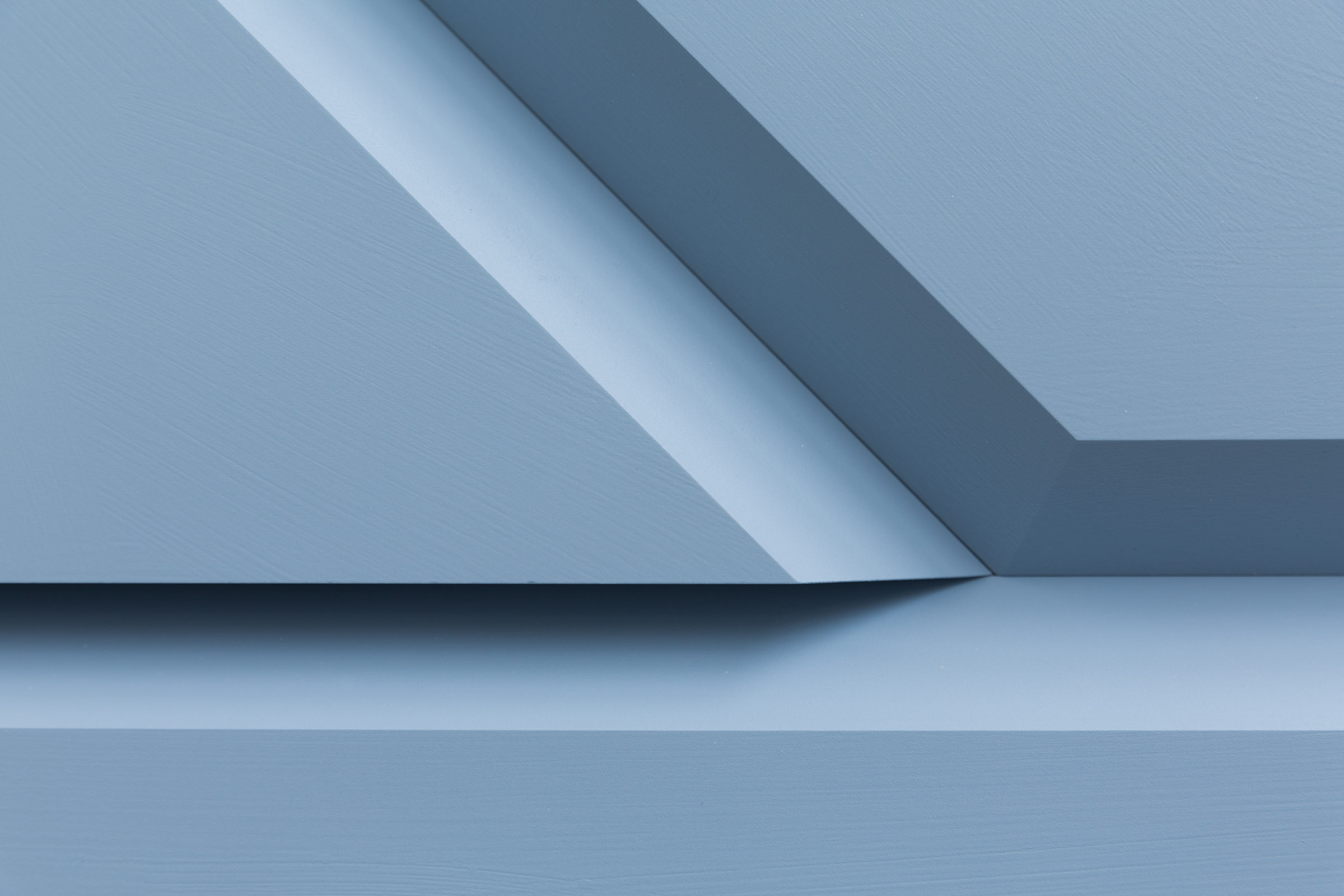Daniel Robert Hunziker
Vielerorten

JUNE 1 – JULY 24, 2013
von Bartha, Basel
Three weeks before the opening of the exhibition I visited Daniel Robert Hunziker in his atelier in Zurich. Looking out the train window on my way back to Basel, I encountered the most important components, if you will, the vocabulary, of DRH’s artistic language: freight yards, the track network, empty halls and sheds, just-built office blocks, historical and contemporary buildings juxtaposed, various urban “furnishings”, the typical housing sprawl of the Swiss midlands, but also the wonderfully gentle hills of the Jura or the dark river-green of the Aare. DHR had told me how he had been influenced at the beginning of his studies by the texts of Robert Morris, Donald Judd and others; how, when he was travelling by train, he had been fascinated by the warehouses of various industries along the line Zurich Basel, where piled-up concrete pipes, spiral staircases, modular metal parts and steel structures suddenly take on a specific sculptural quality. The overture for the current exhibition, a stack of pallets with various bricks, seemingly left accidentally in the show window, vividly calls to the visitor’s mind the association with such a train ride.
Daniel Robert Hunziker’s atelier is located in the Letzi-Quarter of Zurich. This historically industrial part of the city has developed in the last few years from a loose array of buildings to a dense mixed urban conglomerate that includes housing. After arriving in Hunziker’s studio I immediately forgot about the surroundings outside. In my mind the atmosphere in the rooms he has put together and furnished himself was totally expressive of DRH’s art work. A small practical kitchen corner, the bathroom in a wooden box, the safe haven of the bedroom slightly elevated and hidden behind beautifully edged glass, the arrangement of working tables, racks, shelves and chairs – a coherent composition in itself. On the tables some just interrupted work, sketches, plans and samples of materials. It all pertained to the planned exhibition, but would obviously not be seen there in this unfinished state. Indications there were, however. The constructions that DRH has developed himself, using outside technical help only when necessary, his clever colour combinations, the precise selection of his materials and, finally, the well-conceived presentation of his works reveal the intensive processes that precede the final result. But the apparent perfection is time and again punctuated with small displacements, shifts and gaps. Devoted to constructive style, DRH breaks up the formal stringency of his works a bit by implementing small imperfections. “A composition only becomes really fascinating if it stands firmly in itself and at the same time allows openness and lability.”1 The minimal “defects” in the strict raster, the “precarious”, as DRH calls it, are what does it. He is an artist that looks at everything very closely and attempts to let the beholder share a part of his visual experiences. The perturbations and the flaws in the seemingly perfect compositions bring one to look and observe more closely.
In the coming exhibition, in which the dramatic composition in the exhibition space and therewith the manner of looking at it has been consciously created by the artist, close observation is stimulated more than ever. He displays his many-facetted work, shows his whole palette, presents a show in which one can discover familiar and many new works. To be found are many places, uncounted processes, a rich field of decisions and ideas that have driven DRH for over a year. “vielerorten (of many places)” shows us how he looks at the world, what interests him, which details fascinate him. Born and raised in Aargau, starting studies of architecture at the ETH Zurich, a year as assistant for the sculptor Willard Boepple in New York, the return to Switzerland, art studies in Zurich, various travels and stays in foreign countries – Hunziker’s biography permeates his work without dominating it. For his art he starts by contemplating concrete everyday situations, observes and analyses them with his sculptor’s eye, examines their spatial and sculptural qualities and then transfers them into an artistic context. This results in his typical mixture of rather cool, formally stringent and abstract objects which in detailed observation reveal an impressive narration and sensuality. DRH builds architectural fictions out of the industrial repertoire. They tell stories in small details, by indications in the title of the work or through the manner of their presentation. It is an intelligent transfer from everyday life to art that touches a chord in us, appearing in some way familiar. DRH’s themes are located close to everyday life and at the same time linked with theoretical discourse, questions of art history and composition principles. The coming exhibition shows specifically how varied this transfer can be, how consequently DRH confronts his environment, how he takes on with great curiosity, new tasks, new materials and new challenges in order to have his art be an adventure for himself. “It is all about staying awake and curious and regarding one’s life as an intellectual and spiritual adventure. Or, as Nick Cave sings so aptly on his last album: ‘You’ve gotta just keep on pushing / Keep on pushing / Push the sky away.’ And this, independently of how old you are and what you have already achieved.”2
Text: Lena Friedli
1 Daniel Robert Hunziker in a conversation with the author on Mai 13, 2013
Error. No content found for Slider